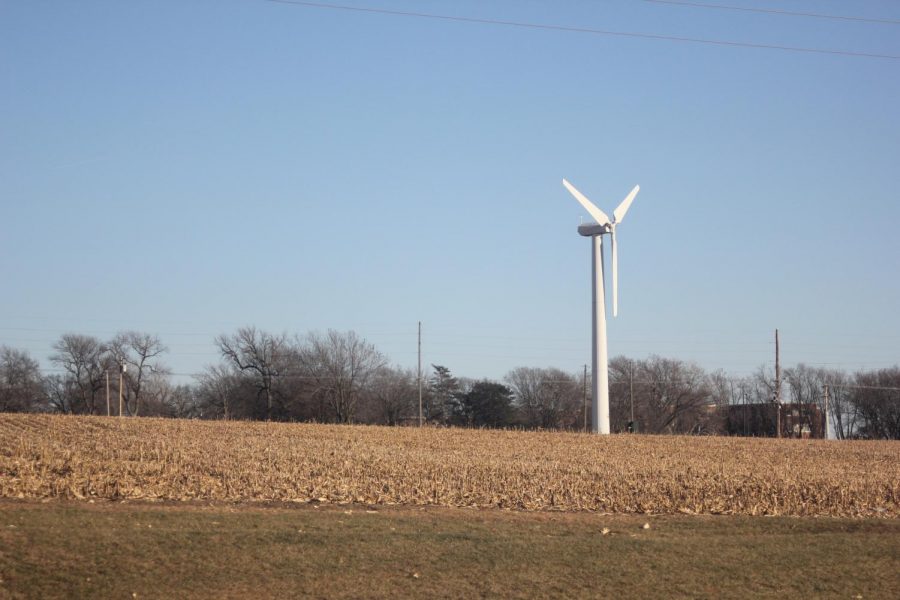Northeast students hand pick, count corn kernels for emergence study
January 8, 2019
NORFOLK, NE – From building the planter to harvesting the crop, Northeast Community College precision agriculture students have been closely involved with a study of the effects of emergence and planter down force on corn yield.
Instructor Chance Lambrecht said the field used for the study is located along Victory Road, just south of the lane to the College farm site in Norfolk. The seed, provided through a partnership with Channel Seed, was planted using a special four-row planter constructed from the ground up by precision ag students. Among other technologies, the planter has sensors that can adjust down force automatically, taking readings and adjusting 200 times per second, and being at the proper downforce setting every 1/5 of a second.
“To put that in linear feet,” Lambrecht explained, “every half inch we were taking a reading, and about every 18 inches we were where we needed to be with the proper down force setting.”
The study involved planting with four static down force pressures ranging from zero to 375 pounds, and the automatic setting. The five trials were replicated three times across the field. Plants in one of the replications were flagged for day of emergence, with different colored flags representing plants observed on day one of emergence, day two, day three, and day four and after.
“Typically, anything that comes up after three days is going to be a runt,” Lambrecht said. “That plant is going to be behind the eight-ball. He’s going to be basically a weed out there, taking up nutrients and fighting for sunlight.”
Lambrecht said late-emerging plants tend to have no ears, or very small ears. Twice during the growing season, he and students pulled a few plants to look at root mass.
“To look above the ground is easy. You can visually tell that, but what is below the ground may indicate what’s going on above the ground.”
Lambrecht said the root samples looked exactly as he expected, with the automatic down force and the zero and 125 pounds of static pressure having more fibrous root matter than the heavier down force pressures. More fibrous root matter would help the plant access moisture and nutrients during the growing season.
Students helped hand harvest part of the crop. Ears were identified by emergence date and down force pressure, and then the kernels on every ear were counted.
“We had roughly 600 ears,” Lambrecht said. “We counted how many rows around and how many long to get an average kernel count per plant.”
Ears were also weighed and then students calculated what the yield would be if every ear on every plant were like the sample ear. Lambrecht estimated that he and the eight students who helped spent about 60 man hours on this part of the study.
The remainder of the field was machine harvested, with the yields measured by the combine yield monitor and also by weighing the grain cart. This data will be analyzed to determine just what impact the down force pressure had on yield.
Lambrecht said there are some variables that have skewed the data slightly. Manure application on the field left some large clods at planting time. There was green snap in some parts of the field, but not across the entire field. Although 24 rows not included in the study were planted on both the north and south sides of the field, deer feeding extended beyond those rows and into the study area.
The abundant rainfall in the growing season of 2018 has also impacted the results of the study.
“Rain can cover the sins of planting,” Lambrecht explained. “Rain will allow those roots to get by the problem areas.”
The ideal moisture conditions also caused many plants to put on two ears, further complicating the yield calculations.
Lambrecht said this is the first year of a three-year study. He said repeating the study over multiple years is important to allow for some of the variables experienced this year. He said the expectation is that higher yields will be seen using the automatic down force versus the static down force, but only repetition of the study and replication of results can verify that.
Students participating the study included Daryn Carroll, Hayes Center; Brady Kahloff, Neligh; Logan McKeon, Stanton; Camden Stephenson – Morse Bluff; Preston Streebin, Elkhorn; Rob Thomas, Johnstown, PA; Aaron Volquardsen, Madison; and Cody Vyhlidal, Fremont.











